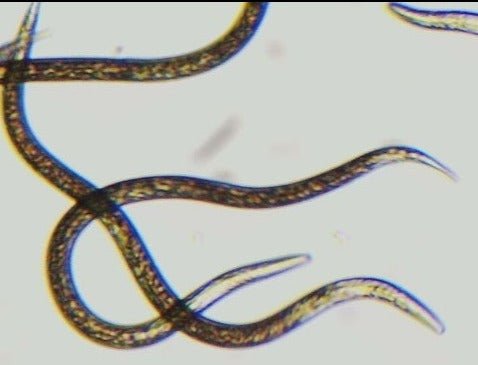
Beneficial nematodes are microscopic roundworms that thrive in soil and are effective against various garden pests, including hammerhead worms. They are nature’s solution to pest control, and using them can be both eco-friendly and effective. Let’s break down how these remarkable little guys work, why they’re a great choice for your garden, and how to use them.
What Are Hammerhead Worms, and Why Are They a Problem?
You might be wondering why hammerhead worms are such a big deal. These creatures can be alarming to spot. They can grow up to a foot long and have a unique head shape that resembles a hammer—hence the name. But it’s not their appearance that worries gardeners; it’s their appetite. Hammerhead worms feast on valuable soil organisms, particularly earthworms, which are crucial for maintaining healthy soil.
Without earthworms, soil becomes compacted and loses its fertility. Hammerhead worms can disrupt this ecosystem, leading to poor plant growth and overall garden health. They can reproduce quickly, so you might find one or two today could turn into a whole population in no time.
Here’s the scoop: when hammerhead worms invade, your garden may not just look less appealing, but it could also struggle to thrive. So, how do we fight back?
Understanding Beneficial Nematodes
Let’s dive deeper into what beneficial nematodes are. These tiny parasites target pests like hammerhead worms and help control their populations naturally. Beneficial nematodes belong to the Steinernema and Heterorhabditis genera and are often found in soil and decaying organic matter.
When introduced into your garden, they actively seek out harmful worms. Once they find their target, they enter the pest’s body and release bacteria that kill the worm. This process is surprisingly efficient. Within a few days, the pest is eliminated, leaving beneficial nematodes free to continue their hunt.
Why choose beneficial nematodes over chemical pesticides? For one, they’re safe for plants, pets, and humans! Plus, they contribute to a balanced garden ecosystem without disrupting it. For those concerned about their environmental impact, this is a major win.
How to Use Beneficial Nematodes Effectively
Now that you’re excited about using beneficial nematodes, let’s talk about how to apply them. First off, you’ll want to purchase nematodes from a reputable supplier, like *Arbico Organics* or *Garden Safe*. Be sure to get the right species that specifically target hammerhead worms.
When it comes to application, timing is key. Follow these simple steps:
- Preparation: Water your garden thoroughly a day before application. Moist soil helps nematodes move around and find their prey.
- Mixing: Once you receive your nematodes, mix them with water according to the package instructions. They’re best used right after mixing, so don’t wait too long.
- Application: Use a garden sprayer or watering can to evenly distribute the mixture over the affected areas of your garden.
After applying, keep the soil moist for at least two weeks to help the nematodes settle in and begin their work. With patience, you’ll hopefully see a decrease in hammerhead worm activity.
Monitoring Results
After treating your garden with beneficial nematodes, it’s essential to monitor the results. Check regularly for any signs of hammerhead worms and observe how your soil health improves. You’ll want to look for an increase in earthworm activity, as they play a vital role in soil aeration and nutrient cycling.
If you still notice hammerhead worms after a few weeks, consider reapplying nematodes or exploring other strategies to manage the population. Pests can be persistent, but with the right approach, you can regain control over your garden.
Alternative Methods for Hammerhead Worm Control
While beneficial nematodes are fantastic allies against hammerhead worms, there are other methods you can consider for a well-rounded approach. Here are a few alternatives:
- Handpicking: When you spot a hammerhead worm, you can remove it manually. Just make sure to wear gloves and dispose of it properly.
- Encouraging Natural Predators: Birds and certain types of beetles love munching on pests. By creating a bird-friendly environment with feeders and nesting boxes, you can help reduce hammerhead worm populations naturally.
- Organic Barriers: Using diatomaceous earth around the base of plants can deter these worms, as they find it hard to crawl over the powdery substance.
Combining methods can strengthen your pest management strategy and promote a healthy, thriving garden.
Battling hammerhead worms in your garden doesn’t have to feel like an uphill struggle. By using beneficial nematodes, you’re not just getting rid of a nuisance; you’re also embracing a natural approach to pest control that supports your garden’s ecosystem. These tiny allies can make a significant difference, allowing you to nurture your plants without harsh chemicals.
So, the next time you see a hammerhead worm, don’t panic. Instead, consider reaching for those beneficial nematodes. They’re the garden superheroes you didn’t know you needed! As you cultivate your garden, remember that nature often knows best, so let those tiny nematodes do their thing and watch as your garden flourishes.
